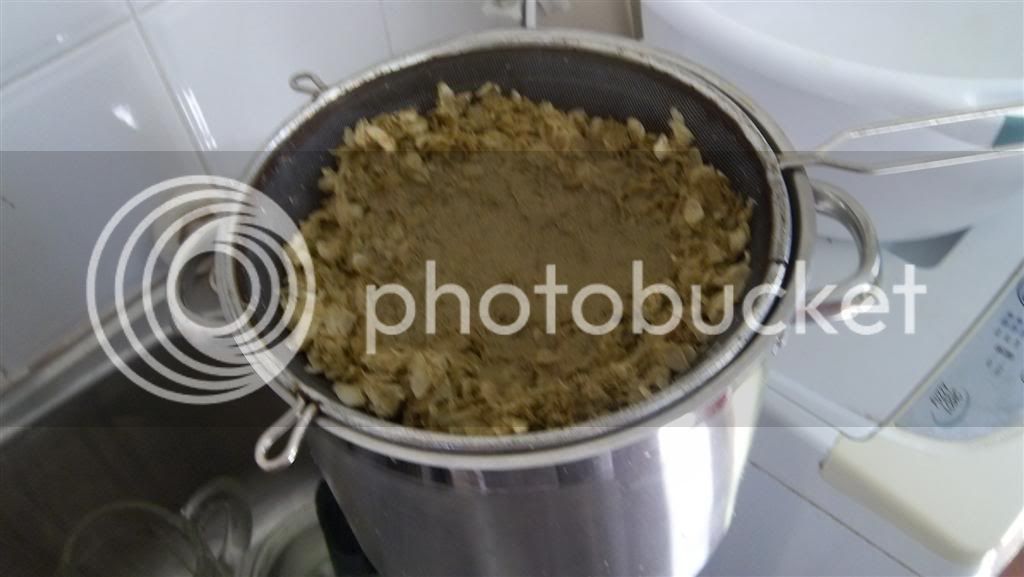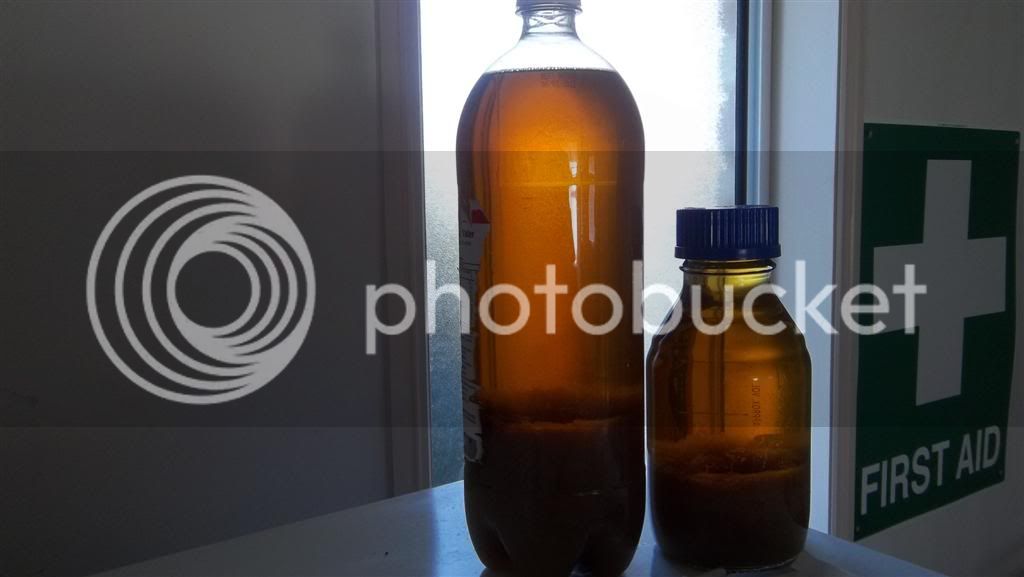I'll take some pictures of the evidence shortly. The reason I don't mash in the lauter tun is for two reasons:
I use a looser mash than "normal" 3v brewing, so it can be pumped with the paint stirrer, and I'm sure it helps gelatinisation and freeing the contents of the crushed grain. It's easily ramped up through various rests as it's more liquid, as noted.
I did a Hochkurz infusion mash last night = maltose rest, dex rest then mashout and it was easy as.
Using just the pail I wouldn't be able to do that as the mash would be too thick and it would not be possible to effectively add enough water additions to ramp up. However I might try it with a simple isothermal infusion mash like the ghetto boys did at the weekend, and see how that goes.
Using the urn as the mash tun, I actually had way more than the lauter tun could hold, and I was worried that I might have to race around for buckets to take the runoff. Then a neat thing happened, that I hadn't fully sussed out but on thinking about it, it makes sense:
I raised the bag, leaving maybe 15L of runoff in the urn.
Tipped grain into the tun to form a grain bed
Progressively jugged the remaining wort from the urn into the tun till it reached the top
Started running into the collecting bowl
When the urn was empty I had still only collected about half the bowl which meant that I could now lift the urn down to take the place of the collecting bowl
Tip current contents of bowl into urn
Keep going till urn half full
By this time the first of the fly sparging was happening
Lift urn back up whilst still light enough to handle
Continue using collecting bowl
So I had heaps of room in vessels and shouldn't have worried.
Sounds like a lot of dicking around, but not really, mostly just moving the runoff hose and doing a bit of jugging, and lift urn down then up later on.
With fly sparging that I've seen happening elsewhere, towards the end they are nervously checking gravities and pH etc in case of tannins.
However with the thinner mash and only 12L of sparge water, the Gods of Sparging arranged that the last runnings were spot on 1010 so for a 5k grain bill that's excellent, if I hit that every time it's a built-in tannin protection.
Anyway, getting the camera charged...... :icon_cheers:
I use a looser mash than "normal" 3v brewing, so it can be pumped with the paint stirrer, and I'm sure it helps gelatinisation and freeing the contents of the crushed grain. It's easily ramped up through various rests as it's more liquid, as noted.
I did a Hochkurz infusion mash last night = maltose rest, dex rest then mashout and it was easy as.
Using just the pail I wouldn't be able to do that as the mash would be too thick and it would not be possible to effectively add enough water additions to ramp up. However I might try it with a simple isothermal infusion mash like the ghetto boys did at the weekend, and see how that goes.
Using the urn as the mash tun, I actually had way more than the lauter tun could hold, and I was worried that I might have to race around for buckets to take the runoff. Then a neat thing happened, that I hadn't fully sussed out but on thinking about it, it makes sense:
I raised the bag, leaving maybe 15L of runoff in the urn.
Tipped grain into the tun to form a grain bed
Progressively jugged the remaining wort from the urn into the tun till it reached the top
Started running into the collecting bowl
When the urn was empty I had still only collected about half the bowl which meant that I could now lift the urn down to take the place of the collecting bowl
Tip current contents of bowl into urn
Keep going till urn half full
By this time the first of the fly sparging was happening
Lift urn back up whilst still light enough to handle
Continue using collecting bowl
So I had heaps of room in vessels and shouldn't have worried.
Sounds like a lot of dicking around, but not really, mostly just moving the runoff hose and doing a bit of jugging, and lift urn down then up later on.
With fly sparging that I've seen happening elsewhere, towards the end they are nervously checking gravities and pH etc in case of tannins.
However with the thinner mash and only 12L of sparge water, the Gods of Sparging arranged that the last runnings were spot on 1010 so for a 5k grain bill that's excellent, if I hit that every time it's a built-in tannin protection.
Anyway, getting the camera charged...... :icon_cheers:







